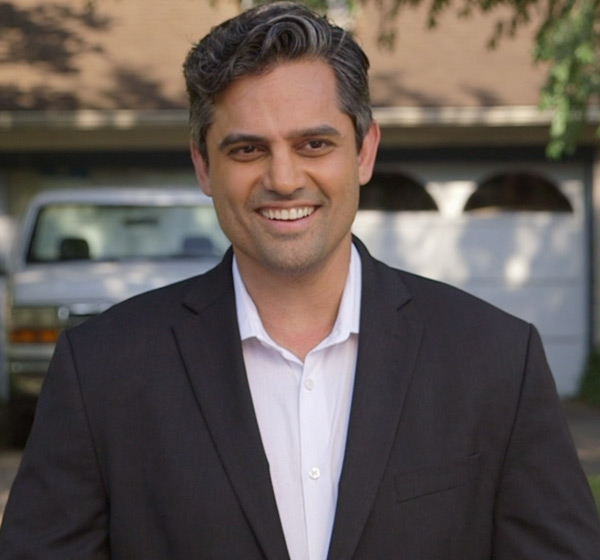
A new study, “Running On Hate,” finds that anti-Muslim rhetoric in political campaigns is on the rise since 2016. It highlights 80 “blatantly anti-Muslim” races nationwide and finds that this rhetoric is a losing strategy.
The Intercept’s Sarah Aziza highlights the report by the legal research and advocacy group Muslim Advocates, which finds that candidates use “Islamophobic rhetoric as a way to establish conservative credentials and galvanize voters.” A campaign was found to be Islamophobic if it:
- Distorted facts about Islam or Muslims
- Contained “slurs or hostility towards Muslims”
- Advocated for policies that deny basic constitutional rights for American Muslims, “particularly freedom of worship”
The study found that this rhetoric is extended to communities “often confused with Muslims, ‘such as refugees, Sikhs, and people of Arab, South Asian, or North African descent.’” Further, it is “active in campaigns at all levels of government and in rural, suburban, and urban settings alike.”
Islamophobic campaigns are based on a few shared tenets: that Muslims are “inherently dangerous,” that Islam is terrorism, and that Islamic extremism threatens “the American way of life.” This rhetoric leads to exclusionary policies. As Aziza notes, “by characterizing Islam as a dangerous political outlook rather than religion, detractors cast Muslims outside the constitutional protections afforded to religious communities by the First Amendment.”
These ideas are not new. Moustafa Bayoumi, author of How Does It Feel to Be a Problem?: Being Young and Arab in America, says, “Islamophobic ideology has been weaponized against Muslims for many years now. Trump may have brought it out in the open, encouraging more people to utilize these ideas at all levels, but these ideas have a deep foundation in American politics.”
Nevertheless, the study found that of the 80 campaigns, only 11 (or 14 percent) “have won or are safely predicted to win their races in November.” About 15 percent of voters endorse anti-Islamic rhetoric, but most, Republican and Democrats alike, reject it. And political participation of Muslims is on the rise, says Vetnah Monessar, the Florida executive director of Emgage, a national nonprofit driving Muslim civic engagement.
Contrast these exclusionary practices with their deep roots in US democracy to the new, inclusive campaigns of many candidates of color. A great example is the race in Texas’s 22nd Congressional District, a Houston suburb, between Democrat Sri Preston Kulkarni and incumbent Republican Rep. Pete Olson.
According to the Intercept’s David Dayen, the 22nd district is “the largest congressional district in America by population.” The district is “incredibly diverse.” Kulkarni’s campaign estimates 100 languages are spoken there. Dayen writes, “Churches mix with temples and mosques, fast-food joints with biryani restaurants along the main boulevards.”
Sign up for our free newsletters
Subscribe to NPQ's newsletters to have our top stories delivered directly to your inbox.
By signing up, you agree to our privacy policy and terms of use, and to receive messages from NPQ and our partners.
It is “a rapidly changing district that national democrats had long ignored, but suddenly believe is flippable.” Much of that has to do with Kulkarni’s strong grassroots campaign targeting nonvoters, which phone banks in 13 languages, strategizes micro-target communities, and offers a politics of inclusion. Campaign volunteer Ali Hasanali says, “You can’t have token representation. That never gets you community-based knowledge that someone in the community does.”
By learning the cultures of the people in the district, recruiting people from those communities, and speaking to communities in their language (including pronouncing their names correctly), the campaign has increased phone bank responses between twofold and fivefold. Kulkarni bested four challengers in the primary by increasing the vote among Asian Americans from six percent in 2014 (the last midterm election) to 28 percent in the 2018 primary. He does this by focusing on building direct relationships with voters through a dedicated and growing network of volunteers.
Kulkarni himself is described as someone who “speaks six languages fluently,” “spent 14 years in the foreign service,” “can talk to anyone,” and inspires “many people to engage so deeply.” While some issues cut across groups, like healthcare and keeping children safe, others are constituent-specific, and Kulkarni understands that, emphasizing different aspects of his platform depending on the audience. Dayen writes,
For Indian-Americans, he finds that everyone knows someone with an H1-B or H-4 work permit visa issue, so he highlights that. With Chinese-American groups, he discusses family reunification (what Trump calls “chain migration”). For [Latinx] groups, it’s family separation at the border.
Kulkarni has outpaced Olson in the most recent fundraising quarter, raising $1 million “without taking corporate PAC money,” a growing trend among progressive candidates. (“Half of Olson’s cash comes from corporate PACs,” writes Dayen.) When endorsing him, the Houston Chronicle raved that Kulkarni “represents our politics at its best.”
Campaign volunteer Renee Mathew says, “It’s the most exciting thing I’ve ever seen.” If Kulkarni wins, he will be the first Asian-American member of Congress from Texas. Some may say he’s already won. Dayen concludes,
Even if Kulkarni doesn’t succeed, the campaign will leave an infrastructure in place for the future: from waves of new Democratic voters locally, to interns and organizers schooled in community engagement who can replicate it anywhere in America. When you activate communities, that switch rarely turns off.
—Cyndi Suarez













